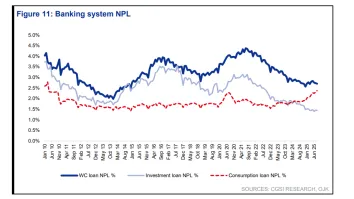
WealthTechs win by managing wealth and not the wealthy
WealthTechs are breaking down barriers to entry by fractionalising costs of assets, analysts said.
The current state of wealth management services has one fatal operating flaw: they are managing rich people instead of managing wealth.
“We have conflated this issue of wealth management to managing the wealthy as opposed to actually providing wealth management services to individuals,” Leon Ong, partner, financial services advisory at KPMG Singapore, told Asian Banking & Finance. “Most people now see there's a gap in the wealth management market, which is to serve the most underserved segment of the market: people like you and me, who earn more money than we spend.”
Although not flush with cash, the mass affluent market has the capacity to save money, Ong noted, but does not meet all the criteria to qualify for traditional wealth management services. Traditional wealth managers often have their eyes locked on servicing high net worth (HNW) and ultra-high net worth (UHNW) clientele. This is a massive missed opportunity that wealth technology or WealthTech firms have readily filled in.
WealthTech firms have notedly enabled lower cost, easier and simpler access to wealth management services and products that were traditionally available only to HNW individuals at a higher cost, noted Theron Lam, head of product development Southeast Asia, Schroders; and Sin Ting So, chief client officer, Endowus.
Lam and So, representing Singapore Fintech Association’s (SFA’s)’s WealthTech subcommittee, particularly highlighted how WealthTechs have helped democratise access to private assets by allowing individuals to access them via lower minimum investment amounts.
“With high rates of adoption of digital financial services, this new generation of investors has more access to information and demands more sophisticated products and more control over their wealth journey,” Lam and So said.
“These clients, with relatively smaller amounts to invest, were subject to high fees, poor access to investment products, and lack of aligned advice. [They] now collectively form a key market, which encourages traditional financial institutions to re-think their models and service offerings,” they added.
ALSO READ: Intent vs ability: Why lending models must be revised to foster financial inclusion
Singapore as a WealthTech hub
WealthTech firms have particularly found a haven in the Lion City, taking advantage of its location, regulatory environment, and reputation to attract investors across the region.
“Asia, in general, is the second largest wealth hub in the world after Europe; [and] Singapore has long been a regional hub of wealth,” Ong said.
Demographics are another key factor. “The city has an increasing population of middle-class and high net-worth individuals,” Ong noted. The financial regulator, the Monetary Authority of Singapore (MAS), and organisations such as the Singapore Economic Development Board also encourage innovation. “They provide grants and funding to kind of get startups off the ground to sort of accelerate their growth.”
All these, along with Singapore’s stable economy, and its position as a financial services hub make the city attract venture capital funding, and therefore startups, to set up shops in Singapore.
In a report, the SFA and PwC identified WealthTechs as one entity that will increasingly shape the asset and wealth management sector in Singapore and across Asia-Pacific.
“With several MAS-licensed WealthTech platforms reporting Assets Under Management (AUM) reaching into billions of Singaporean dollars, this interest is likely to grow and present opportunities for Singapore’s fintech(s) to partner and participate in the asset and wealth management sectors,” SFA and PwC said in its FinTech State of Play report.
ALSO READ: Do Singaporeans need help managing their money?
New Models
Two entities, in particular, stand-out other WealthTechs in the city: Endowus and StashAway. Both have succeeded in tapping into the large gap of mass affluent, not-yet high-net-worth individuals looking for a platform to accommodate their wealth management needs.
This was exactly what Endowus CEO Gregory Van told Asian Banking & Finance as one of the three things that allowed WealthTechs in Singapore, and particularly Endowus, to successfully grow their AUMs.
“Number one is our business model, where we can be totally client-aligned, [or] what the industry calls fee-only; which means we can only be paid by our clients. This business model is very difficult unless you can do it at scale, and that scalability is helped through technology. Technology allows expertise to be delivered at scale, and in a business-like wealth management, that expertise is really, really important,” Van said.
Second is that their use of technology allows WealthTechs and Endowus to deliver the best access to products and solutions at a very low cost.
“Number three is, there's a generational shift or an experiential shift in what the end clients expect from an experience. That experience is more and more moving online even for things as intimate as wealth management,” Van noted.
KPMG’s Ong further noted that WealthTech’s success as a sub-sector of the financial technology sector lies in its ability to change the narrative in the wealth management services space.
“The way I look at it is, if wealth tech as a sub-segment of fintech if it becomes truly successful, what you actually are successful in doing is democratising a lot of the wealth management services that traditionally are only reserved for the ultra-wealthy,” Ong said.
Traditional wealth management services do so from a base, which is retail banking. “They lack visualisation of the portfolios, the visualisations of that person's wealth, and the ability to be able to suggest what that person should do based on their previous actions. This is definitely something that the wealthtech players do better and they're also kind of changing the dialogue when it comes to how you engage with the client,” Ong noted.
Michele Ferario, CEO and co-founder of StashAway, further noted that the emergence of WealthTechs changed the game when it came to offering wealth management services.
“Wealth in Singapore is still largely managed offline, with people buying unit trusts, insurance products, and structured notes from banks’ relationship managers and independent financial advisors. Not only do clients pay higher commissions, they also don’t receive any real advice on portfolio construction,” Ferario said, adding that financial products are sold individually, as the system is built on revenues generated by buying and selling products.
ALSO READ: Fintechs pivotal to achieve $275t capital needed for successful sustainable transition: study
The emergence of WealthTech has made it simple and cost-effective to invest in diversified portfolios offering access to different investment products – from crypto to ETFs and stocks, Ferario said.
“WealthTech players have also invested significantly in educating clients, explaining the importance of portfolio construction and asset allocation, showing how costs can impact returns, and more,” he added.
Several new models have also emerged over the past few years in part thanks to WealthTechs, according to Ferario. This include peer-to-peer lending offering direct investments into SME lending to low-cost self-service brokers to more holistic digital wealth managers like StashAway.
“As a significant amount of investors opened accounts with these new players and started to invest part of their savings, many banks and advisors felt the need to offer similar services, and a few launched digital wealth management services. The push from new players has created enormous value for investors, as it is now possible to invest in diversified portfolios easily and at a low cost. This was difficult and only available to a small minority 4 to 5 years ago,” Ferario noted.
Fractionalisation
WealthTechs are particularly noted to be democratising wealth itself, reducing minimums not just by offering lower fees but making certain expensive stocks and products more reachable for the mass affluent market.
“Imagine you try to buy, for example, Berkshire Hathaway, it's a classic example of a stock that's never split. Therefore the value is very high, in terms of the minimum investment that you need to be able to buy into it. That's similar to a lot of other hedge funds, a lot of other funds and some of the other stocks that are out there. The entry-level investor may not have the money or even the appetite to spend that much money on a single investment choice,” Ong noted.
ALSO READ: BNPL regulations toughen debt prevention and financial literacy in APAC
What Wealthtech players are doing is fractionalising the minimum investment and spreading it out over a lot of their investors.
“Rather than having to invest $1,000, to start with, WealthTech firm can find 100 people who want to buy the same stock, and offer the investment to each person for a minimum of $10,” said Ong.
“Fractionalisation is another way that they're making investments that were otherwise reserved for the ultra-rich, and they're bringing it now and making it available to those of us who might think a bit harder about putting down that kind of money on my first investment,” he added.

















 Advertise
Advertise






